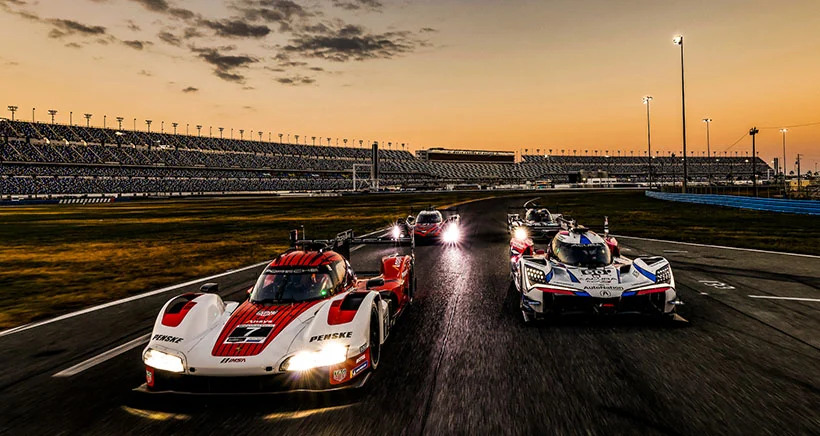Written by Claudio Boscolo, english adaptation by Davide Orofino.
THE ORIGINS
Born in the footsteps of the 24 Hours of Le Mans, the 24H of Daytona gradually became an endurance classic.
Born as a three-hours endurance race in 1962, valid for the World Sports Championship, it soon changed direction, extending its lenght to become a two-thousend-kilometer race in 1964.

Thus, the duration of the event went from less than a handful of hours to a full twelve hours until Ford intervened in 1966.
In fact, the American giant, having announced its partecipation in the 24 Hours of Le Mans, needed a longer race to better prepare its GT-40.

EVOLUTION
As mentioned above, the 24 Hours of Daytona has undergone several changes over the course of its existence.
It started out as stage valid for the World Sportprototype Championship and only became part of IMSA from 1982.
This changed did not at all penalize the competition, which had no trouble finding entries; in fact, it gradually consolidated itself more and more as a spectacular classic.
It was in the roaring 1980s that IMSA responded to the Group C prototypes (which partecipated in the world championship) with GTPs.

As a matter of fact, IMSA was unwilling to adapt to the fuel consumption restrictions imposed by FISA, nor did it want to accept the new regulations regarding twin turbos and pedal boosters.

Daytona, however, was bound to see new categories: after GTPs it was time for the WSCs (World Sport Car) among which the Ferrari 333 SP stood out.

Despite this innovation dated 1994, the category struggled to take off so much so that further changes took place in 1998.
In fact, the family that owned the circuit put in place a series of very short-sighted choices that caused a collapse in the popularity of the event.
The solution was to abandon the old way and join the Grand-Am Association while as for the cars involved there was a radical change.
Abandoned the WSCs were introduced the Daytona Prototypes, which in more recent times became DPI (based on LMP2) until the introduction of the LMDh starting with this edition.

SOME FACTS
In 1967 Ferrari put three cars on the podium arriving in parade, this was not the only time although the most famous one. The following year in fact Porsche also arrived in parade with three cars on the podium.
In 1972 due to energy crisis the race was reduced to only six hours of duration.
In 1974, again because of the energy crisis, the 24 Hours of Daytona was not held at all.
The record number of drivers to alternate in the same car during the race was seven in 1997.

